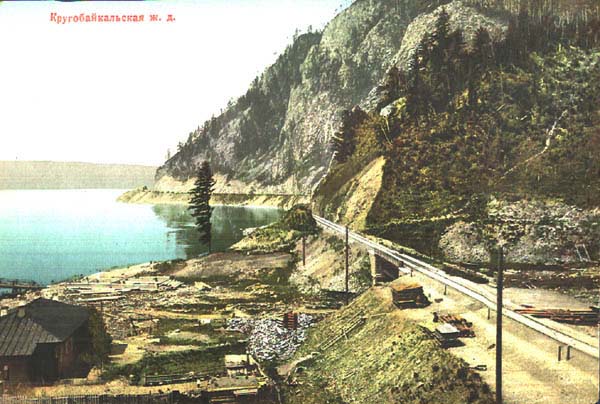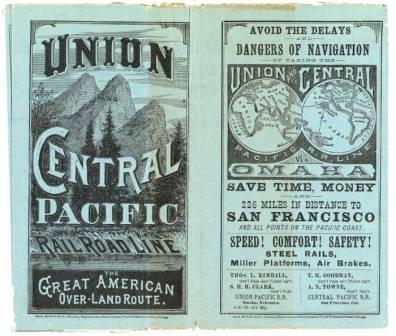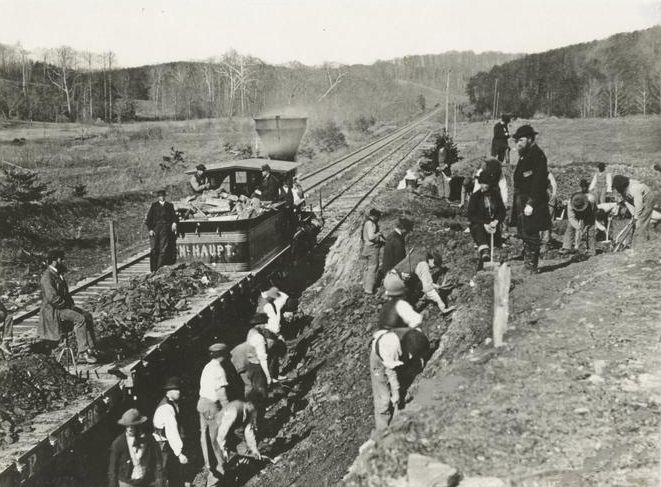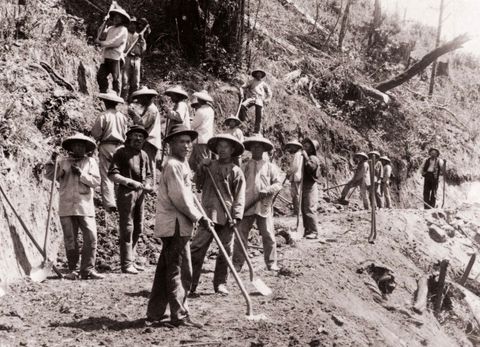First Industrial Revolution Phase 2
First Industrial Revolution 1840-1890 (Phase 2)
In the history of project management the second part to the first Industrial Revolution began around 1840 with the development of all-metal machine tools in the first two decades of the nineteenth century. This enabled the manufacture of more production machines for manufacturing in other industries. The precision in these tools cut metal on an industrial scale with precision and accuracy. This improved technology vastly and evolved steam engines, the railroads and ships.
|
As the production costs of concrete, iron, and glass plummeted these replaced more traditional materials. The industrial revolution required an advanced system for transportation and distribution. This was first brought about by canal networks, 18th century, and then the railway systems. The first steam railway was only operational in 1825 and as early as 1832 there were serious discussions of connecting California to the rest of the Union. The U.S. Transcontinental Railroad was an immense project, crossing the continent from coast-to-coast. Many reputable engineers testified, before legislative committees, that the project was impracticable. Some of the main challenges related to the eight hundred miles of almost uninhabited country, over mountains and across an alkali desert, which were not well known. The project was discussed for at least 30 years in government circles. In 1863 President Abraham Lincoln initiated the project through the Pacific Railroad Act an official project charter to build both a transcontinental railroad and telegraph line. This was one of the first organized U.S. government projects. The civil war had demonstrated how to organize major projects. The business case for the government was based on the cost savings for the government in military transportation, with a net gain of $50 million over the cost in a 7 year time frame. It was also motivated in part to bind the Union together during the strife of the American Civil War and accelerating the populating of the West by white settlers. The project required enormous feats of engineering and labor in the crossing of the plains and high mountains, and this required an enormous project budget, the likes not seen before. The government had to initiate the funding through both funds, government bonds, and land through grants and persuade financiers to join the project. By 1864 Cost Management became the predominant project issue. The CPRR laid 20 miles of track before running out of money. Since the North and the South were deeply engaged in the Civil War, the price of equipment was becoming greatly inflated and some was becoming more difficult to acquire. During the building of the railroad, the price of 1 ton of rails went up from $55 to $115. The price of one keg of black powder went up from $2.50 to $15. The project approach was to build first and improve later, as the railroad became operational. The emphasis on a rapid build kept the critical path of activities on track. Hence, the use of wooden trestle bridges, which could be put together quickly. The project workforce was obtained from everywhere including a scheme with the Chinese government where a Chinese workforce of 10,000 workers was procured for the project. The majority of the Union Pacific track was built by Irish laborers, veterans of both the Union and Confederate armies, and Mormons who wished to see it pass through Ogden and Salt Lake City, Utah. The Chinese workforce worked for the Central Pacific. Over time the daily construction rate increased from 1 to 2, to 5 miles a day. The progress became so rapid it astonished engineers, capitalists, and governments around the world who were closely watching progress. The leading road crew set a record by laying 10 miles (16 km) of track in a single day. The overall construction time was 3 years, 6 months, and 10 days. The project was completed eight years ahead of schedule. One of the most significant building projects of the era was the Crystal Palace which was built at the height of the industrial revolution for the Great Exhibition of 1851 in London to symbolize the industrial, military and economic superiority of the UK. Designed by Sir Joseph Paxton in only 10 days it was a large iron and glass modular structure with over a million ft of glass, a floor area of 770,000 sq ft.,1851 ft long, and 450 ft wide. It showcased over 13,000 exhibits that were viewed by over 6,200,000 visitors. It was precursor to the skyscrapers of the 20th century.
|
|
Other Significant Projects in this EraWhen the U.S. project completed in 1869, it was a catalyst and encouraged some of the largest projects ever sponsored by governments namely, the transcontinental railroads of Canada (completed 1885), and Russia (completed 1917). These were built for security factors and to unify each country.
The Trans-Siberian Railway, despite the enormity of the project, length of 9,289km (5,772 miles) was completed in 12 years to provide a continuous route from Moscow to Vladivostok across 8 time zones. It was driven by fear of military invasion coming from the East (Japan). The evolution of the railway continued at a tremendous pace and within a decade there were several transcontinental railways crossing the USA. On June 4, 1876 an express train called the Transcontinental Express arrived in San Francisco, California via the First Transcontinental Railroad only 83 hours and 39 minutes after it left from New York City. Only ten years before the same journey would have taken months overland or weeks on ship. The era also saw great strides in transportation projects namely the rapid development of ocean going steamship liners (and super-liners), and dreadnought (battleship) races of the early 20th century. |
 |



